The Main Railway Station Campus of Education is a communal educational facility for children aged from 0 -14 comprising a kindergarten, primary school and secondary school. Transitional boundaries between facilities are experienced as flowing, thus creating promising pedagogical and spatial synergetic effects. The campus is run on a full-time basis all the year round. The campus is based on an innovative educational concept of the City of Vienna. Specified for the first time on the basis of a quality catalogue rather than a spatial programme, it had been the declared programme of the competition to spatially define the ideal learning environment for modern everyday school life. These educational facilities are organised in so-called clusters, which are units each consisting of four classrooms, a project room and a team room for teachers. A shared area in front of the classrooms, the so-called market place, is used interactively. Based on the simple concept of avoiding exterior axial alignment, this market place can be fully furnished and used for teaching purposes.
Bildungscampus Sonnwendviertel
Bildungscampus Sonnwendviertel
Bildungscampus Sonnwendviertel
Bildungscampus Sonnwendviertel
| Year | 2014 | |
| Project Type | Dual-Stage Competition, 1st Prize | |
| CLient | City of Vienna | |
| Size | 12.960 m² | |
| Place | Vienna | |
| Project Team | Anna Popelka, Georg Poduschka, Ali Seghatoleslami, Lilli Pschill, Klaus Moldan, Paul Fürst, Roland Basista, Veronika Bienert, Stefan Dobnig, Andreas Hradil, Katrin Lehner, Anna Lafite, Philipp Müllner, Nadja Rechsteiner, Philipp Rudigier, Carl Schläffer, Felix Zankel, Anna Zottl | |
| Excerpt | Municipal education facility for 0 to 14-year-olds |

>>View Project

By loading the video, you agree to Vimeo's privacy policy.
Learn more
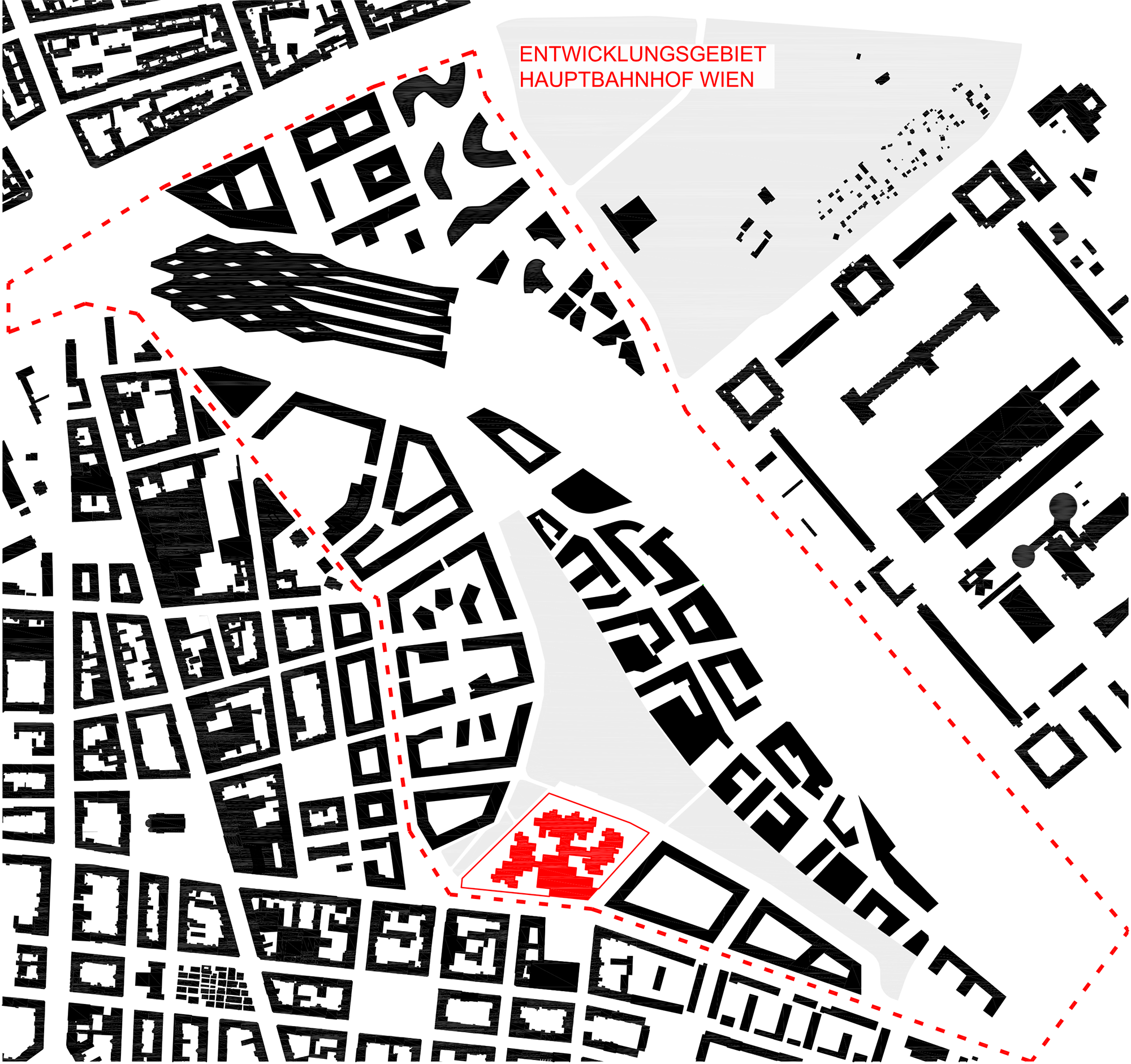
Architecture: PPAG architects
Client: City of Vienna
General planning:
Building: ARGE Bildungscampus (DYWIDAG/ÖSTU-STETTIN/ HABAU)
Outdoor: Swietelsky
Indoor facilities: ERTL Butor
Structural engineering: Werkraum Ingenieure
Technical building equipment: Bauklimatik
Landscape architecture: Karin Standler (competition), EGKK Landschaftsarchitektur (rework)
Fire consulting: DI E.M. Pausa
Lighting planning: Bartenbach
Artistic graphical components: Bleed
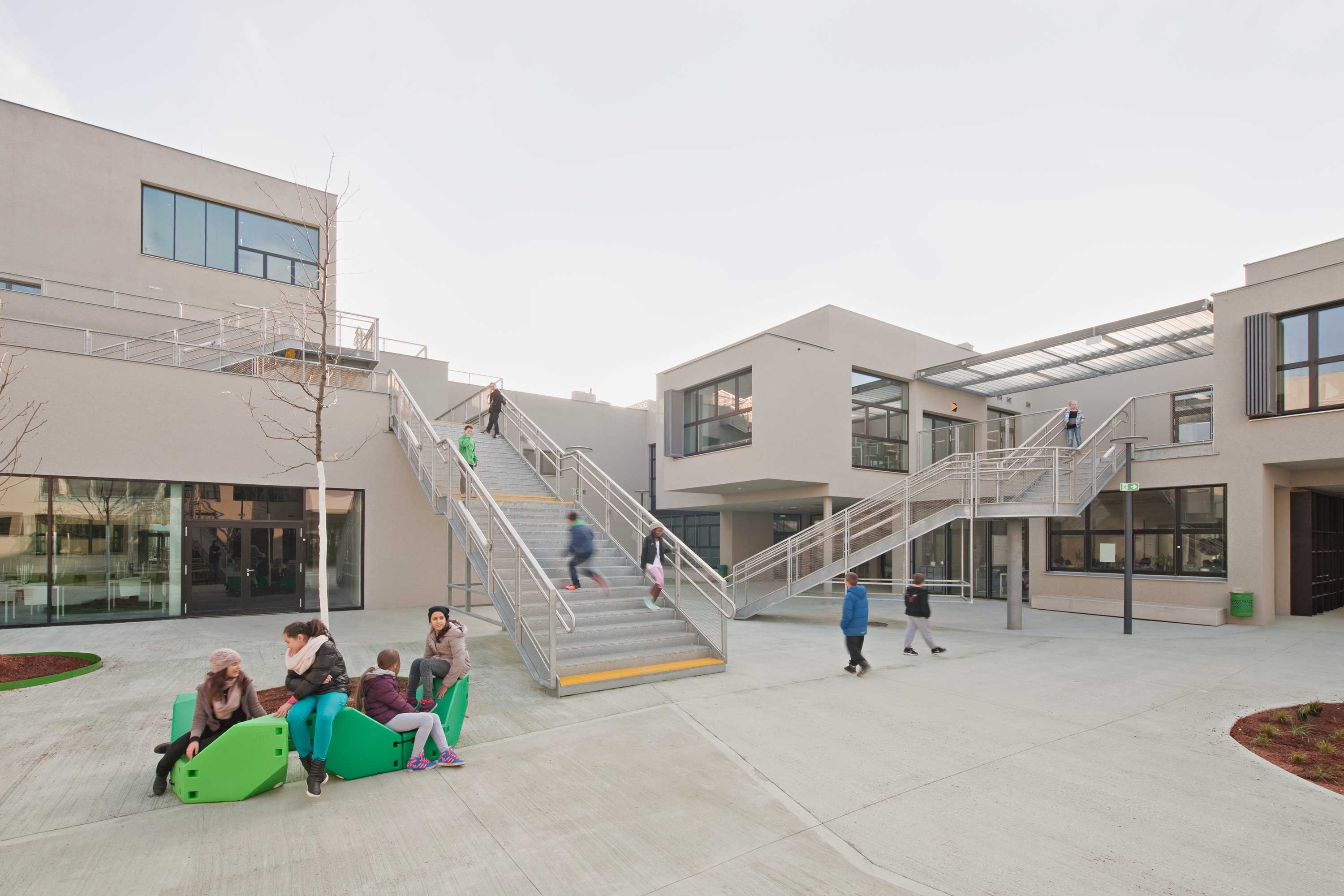

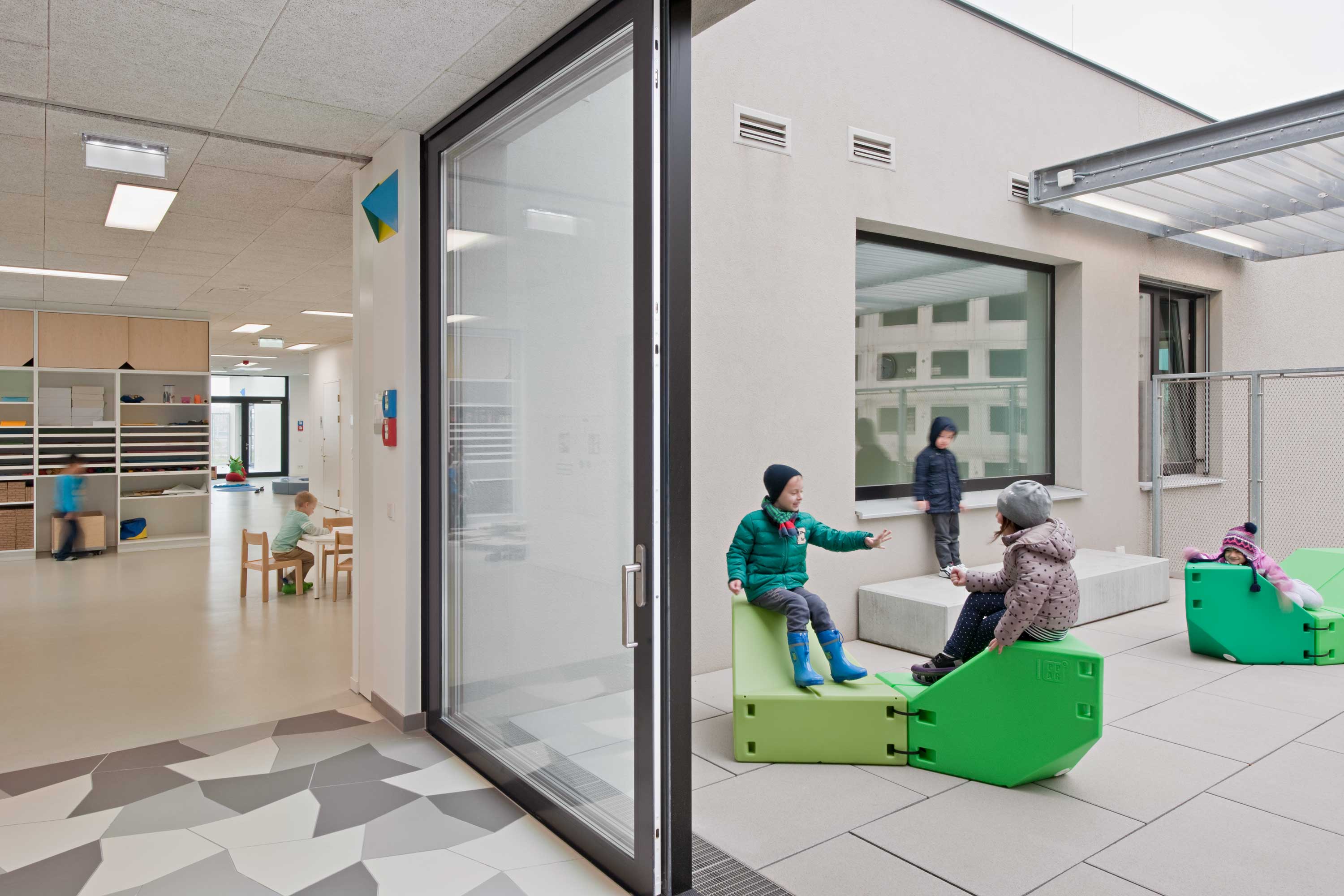
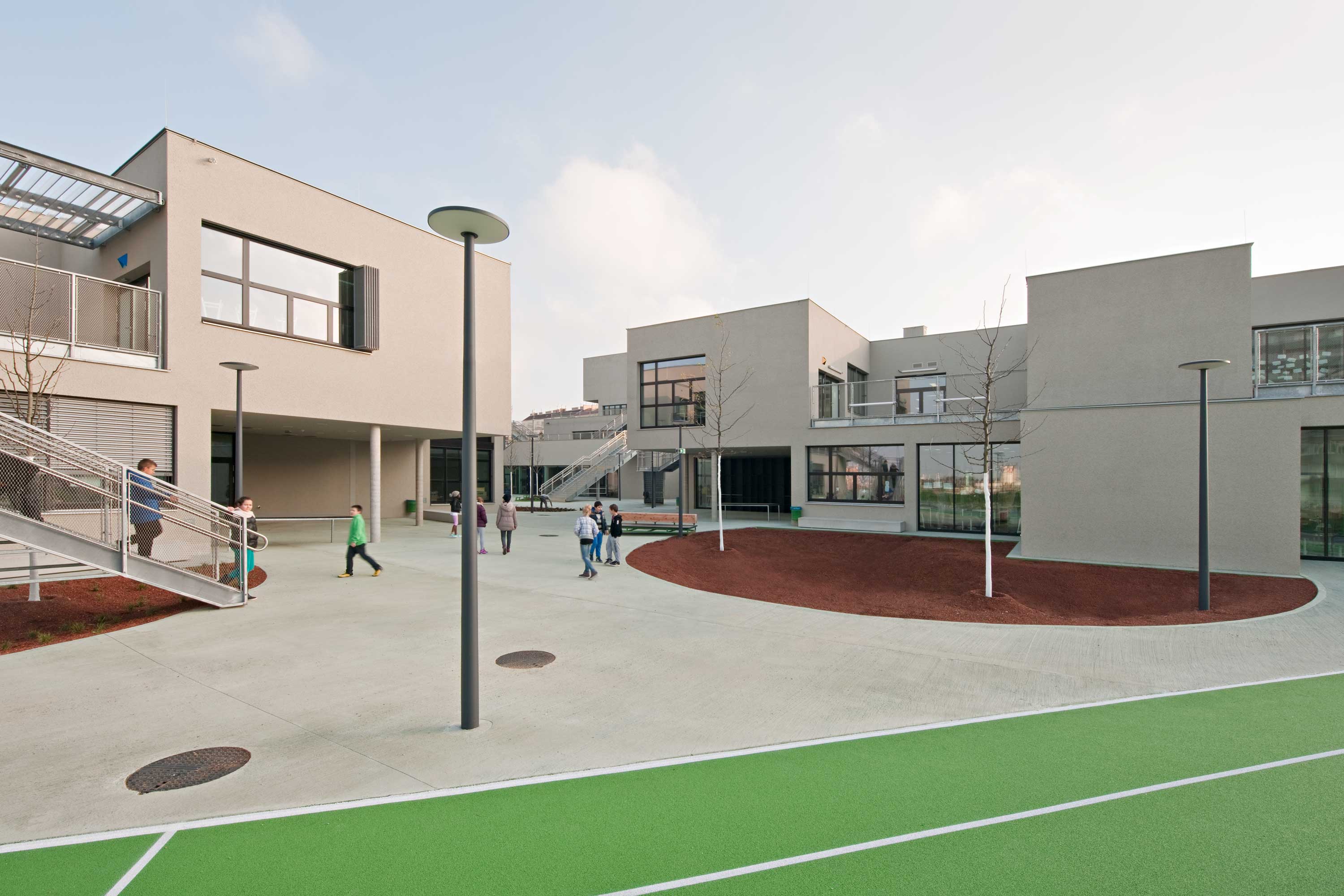
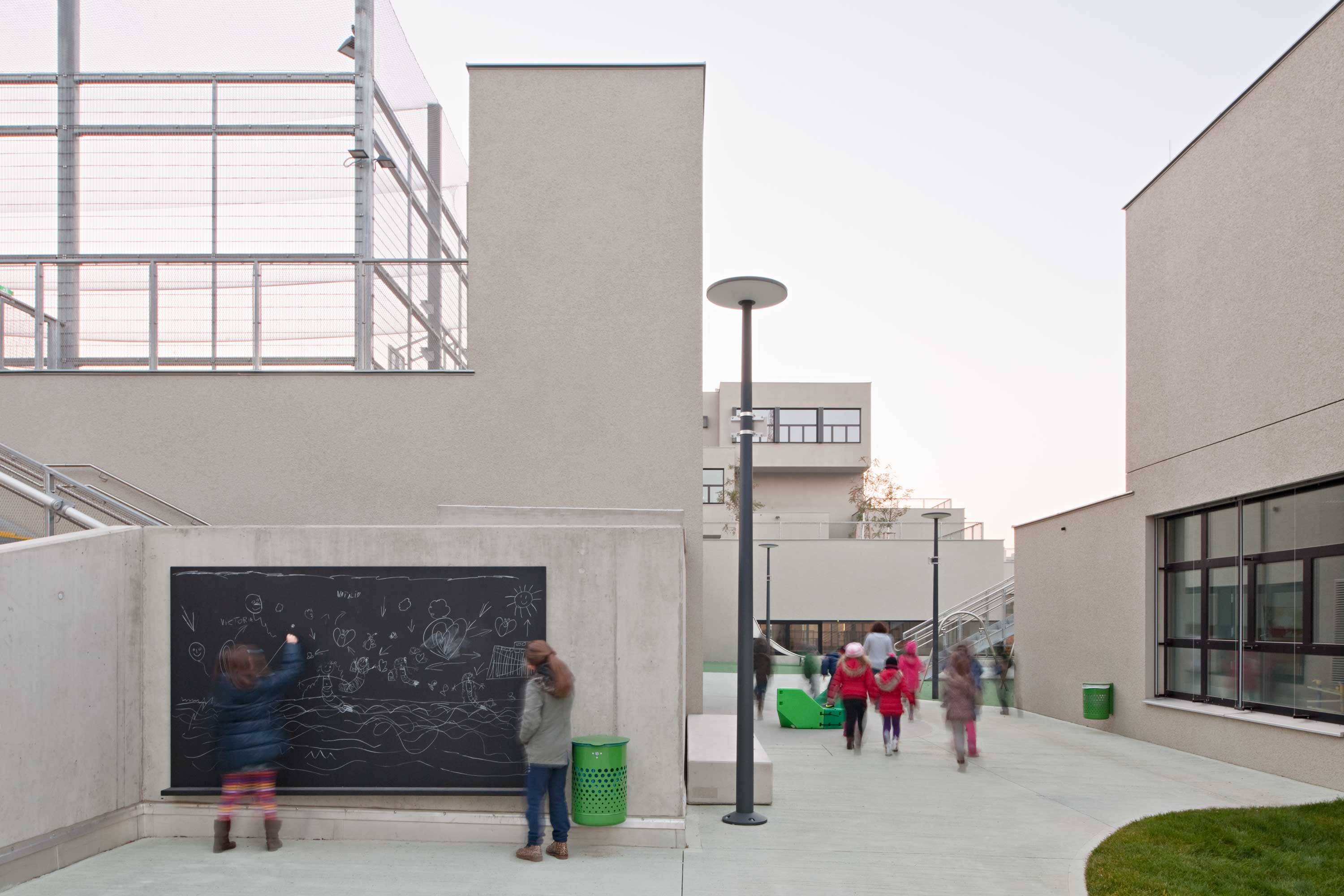
Resultant diverse meeting places enable children of all ages to learn from each other. Although individual parts of the school resemble one another, they are in no way equally structured or assembled, and no classroom looks alike. Students learn how to find their way around just as in an urban area. Special codes, similar to those of Scottish clans, mark individual groups within the school community. Boundaries between classrooms are blurred in favour of more subtle and variable transitions; boundaries are therefore negotiated and independence is learned based on choice. All classes have directly adjoining smaller rooms (nests) for quiet or active learning and playing. Everything is grasped as a possible approach, whether it be urbanistic considerations or especially crafted desks designed to allow students to learn in groups, rather than just in pairs.
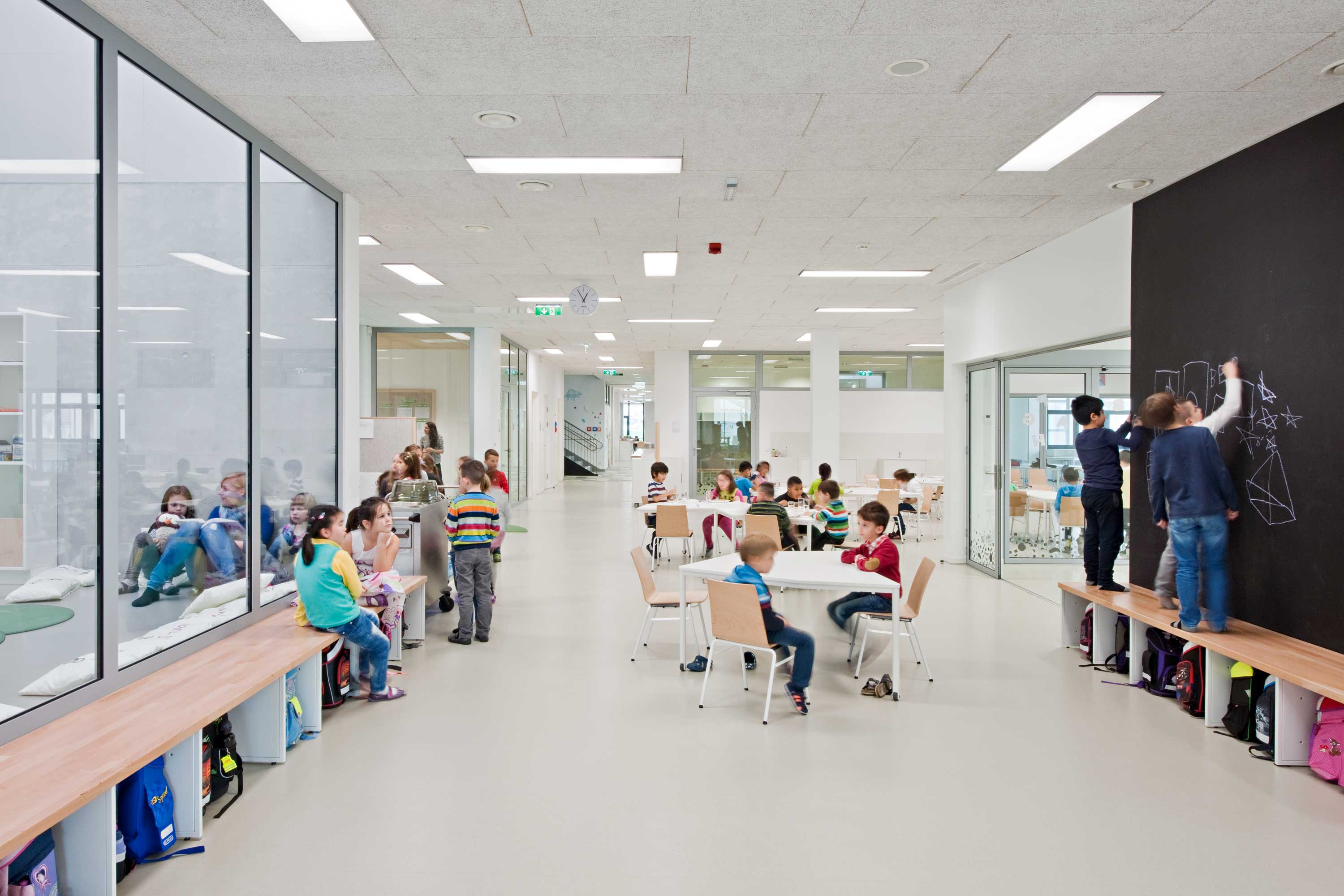
Morphologically, it is no coincidence that these results are reminiscent of models from the second half of the 20th century, which had been established against a backdrop of free pedagogy that would bring out the best in every single child. Today, this educational approach has become state of the art, unfortunately often squeezed into completely inadequate rooms.
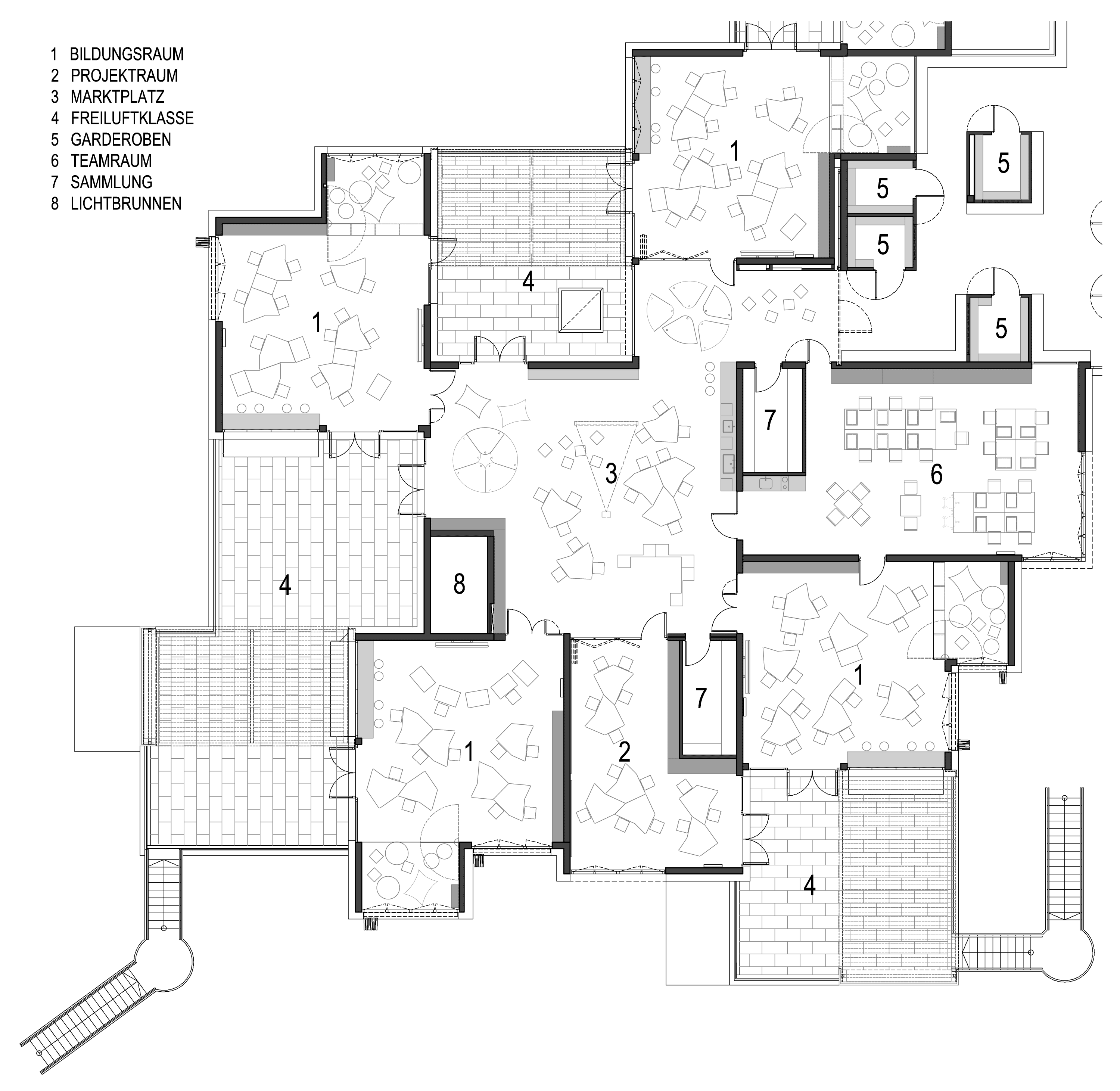
Simple in principle, yet no one place looks the same:
Four classrooms are programmatically assigned to one cluster, with two clusters per upper and lower floor.
According to ground plans, the classrooms above recede by one space, thus yielding open classroom spaces allotted to each classroom – in the form of a terrace on the upper deck and as a covered area below.
Staff team and project rooms (black) are not staggered and lie directly above and below each other respectively.
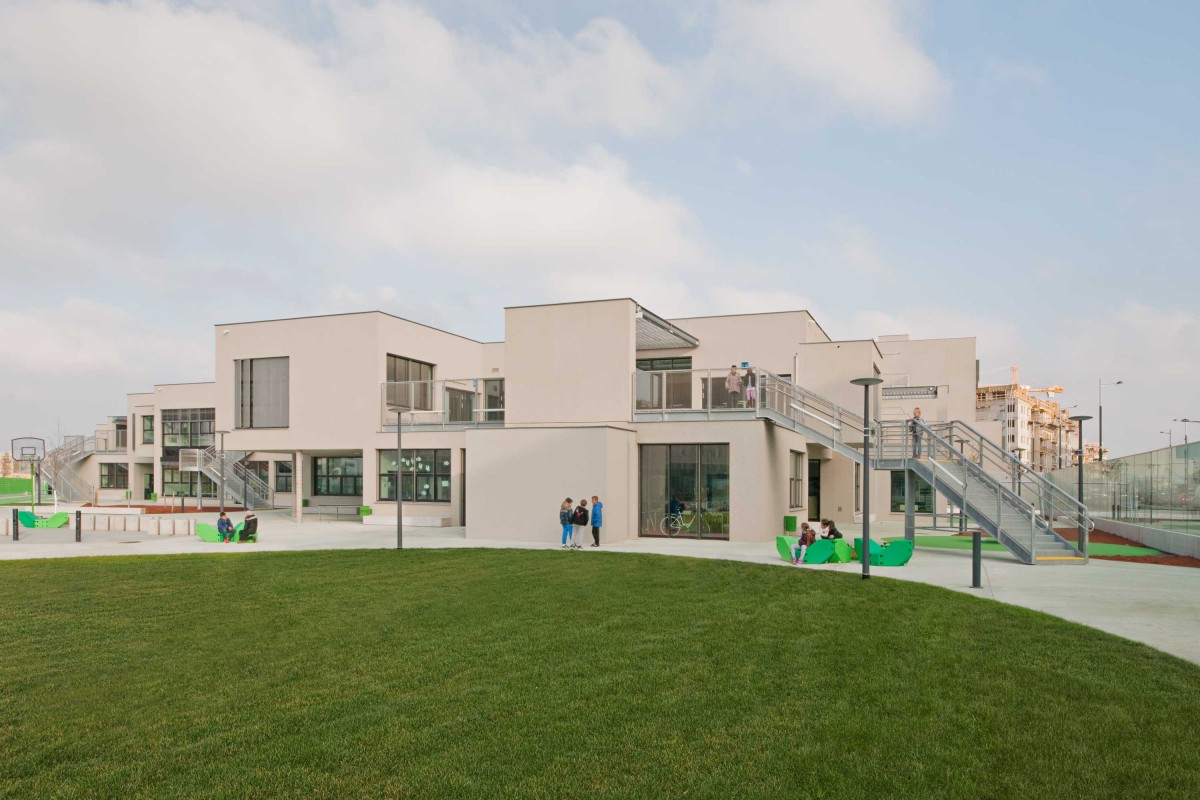
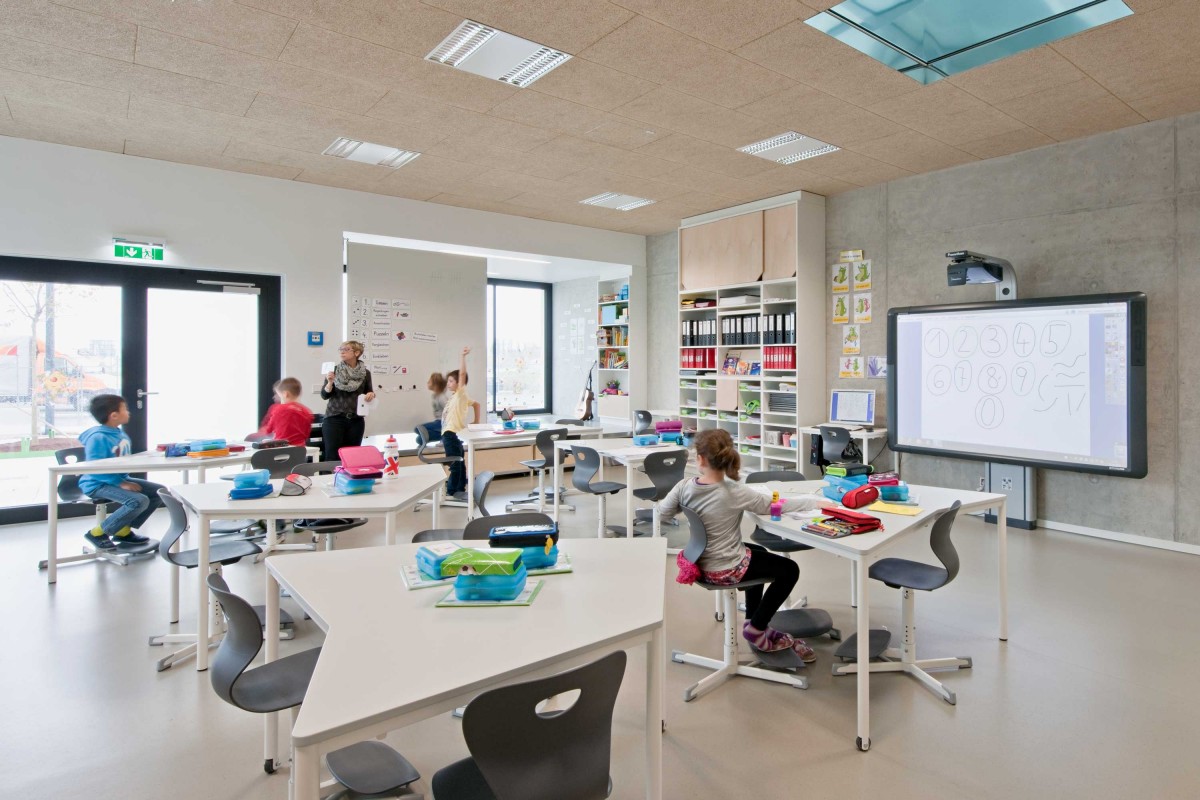
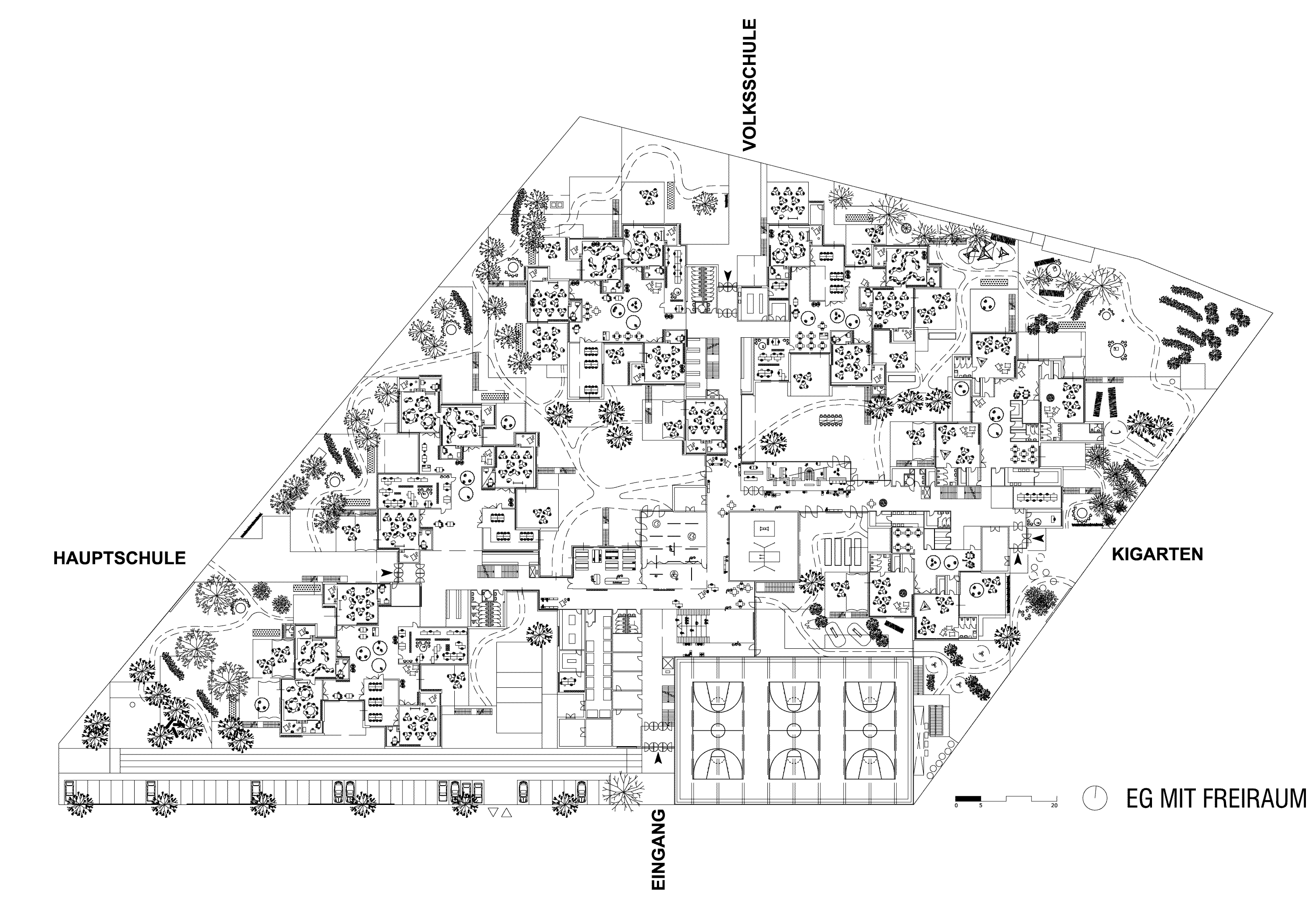
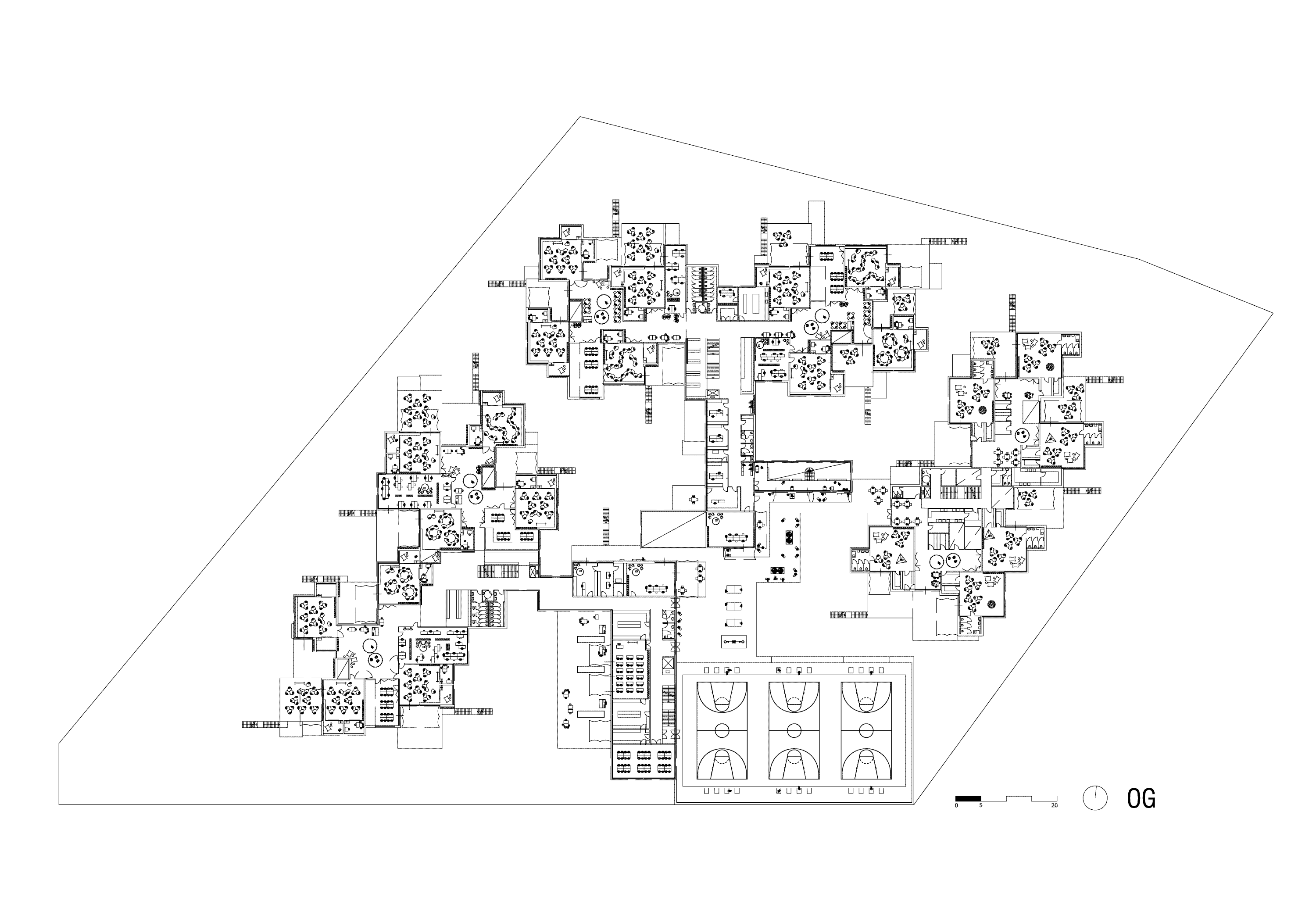
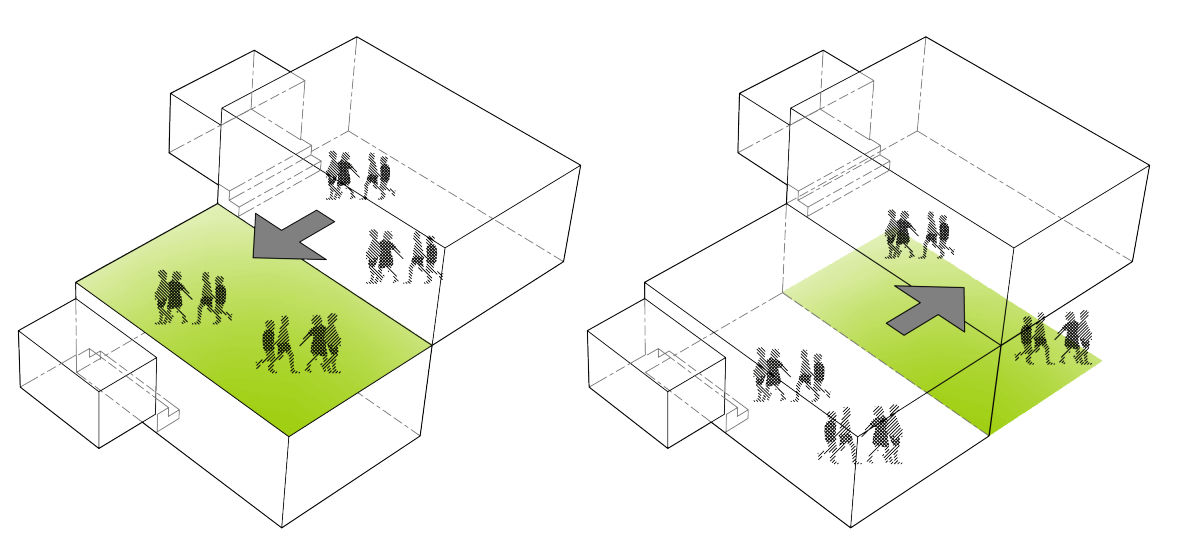
open space
in the form of a terrace on the upper deck and as a covered area below
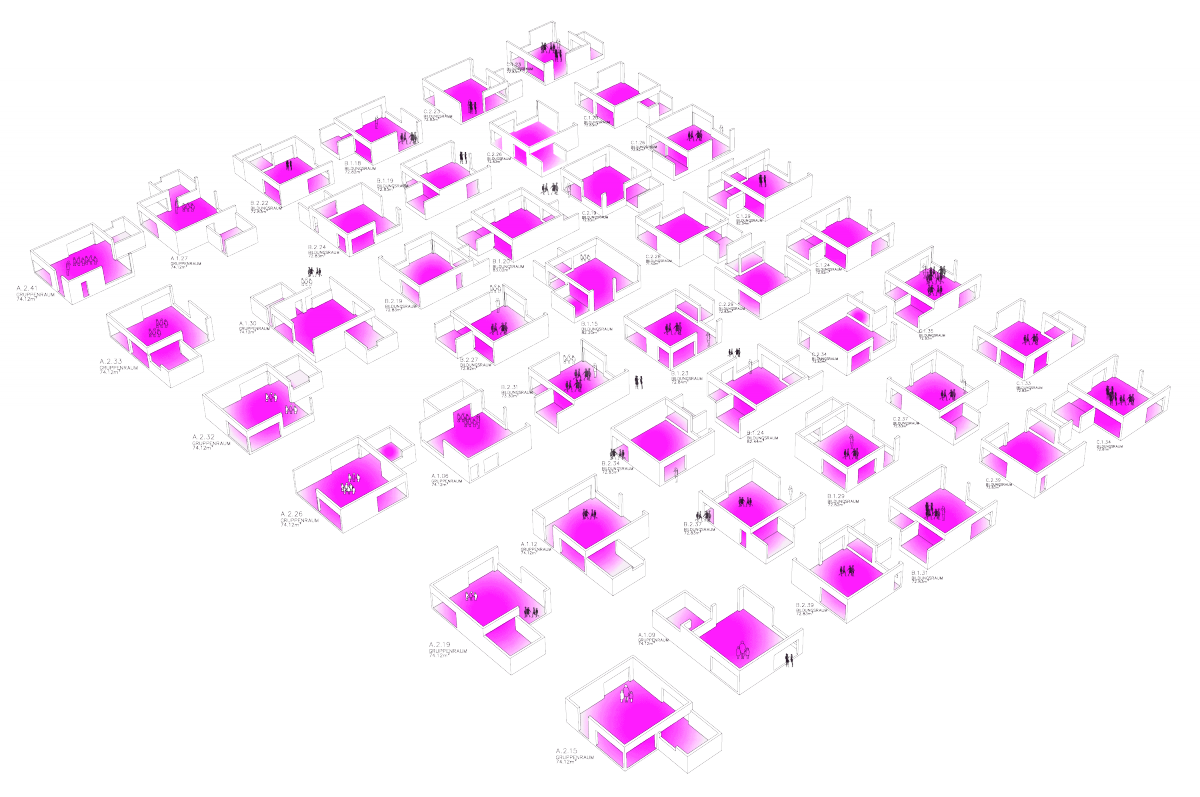
Educational rooms: all similar, but none the same
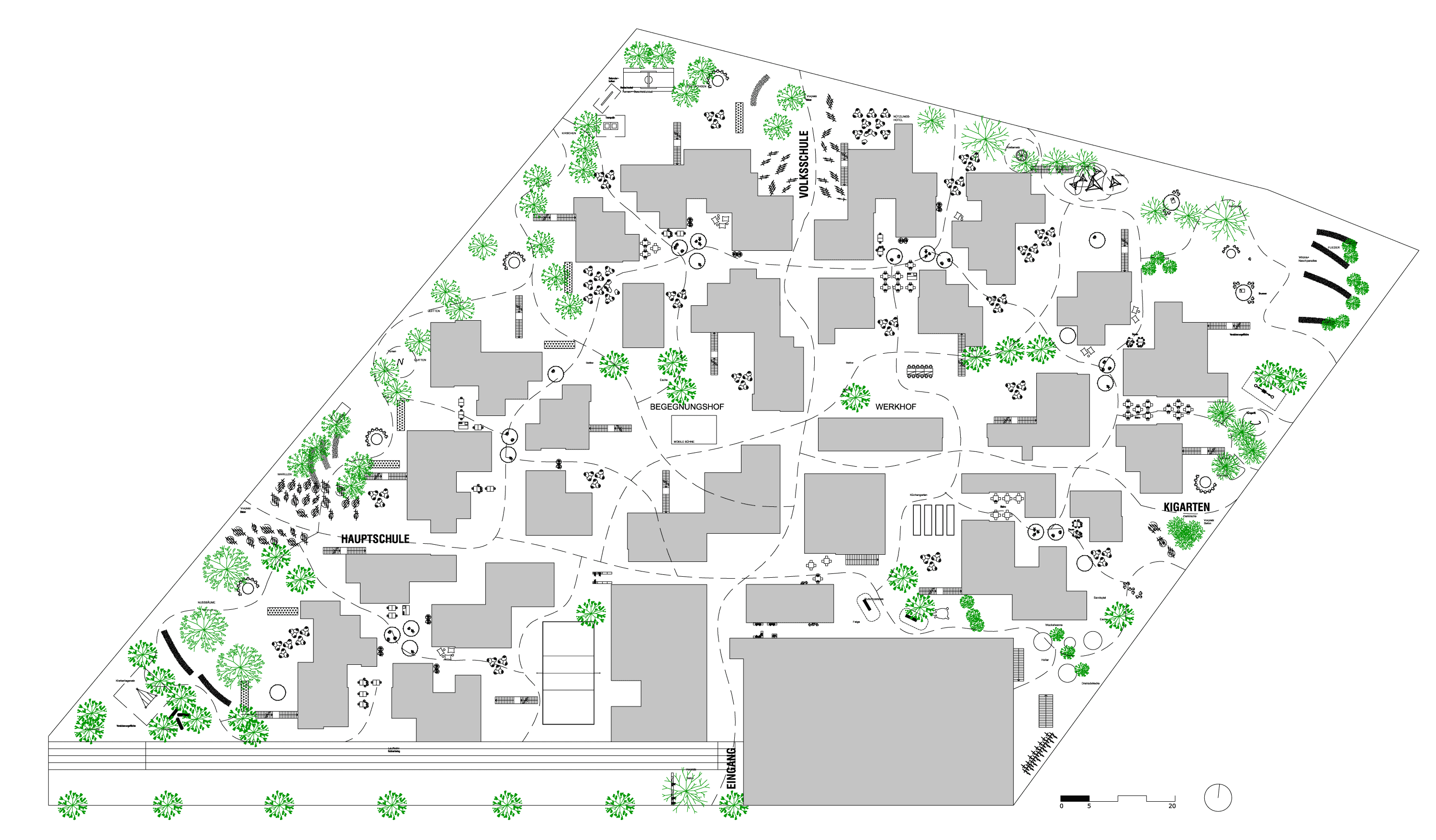
In summer, the campus is experienced as a small town
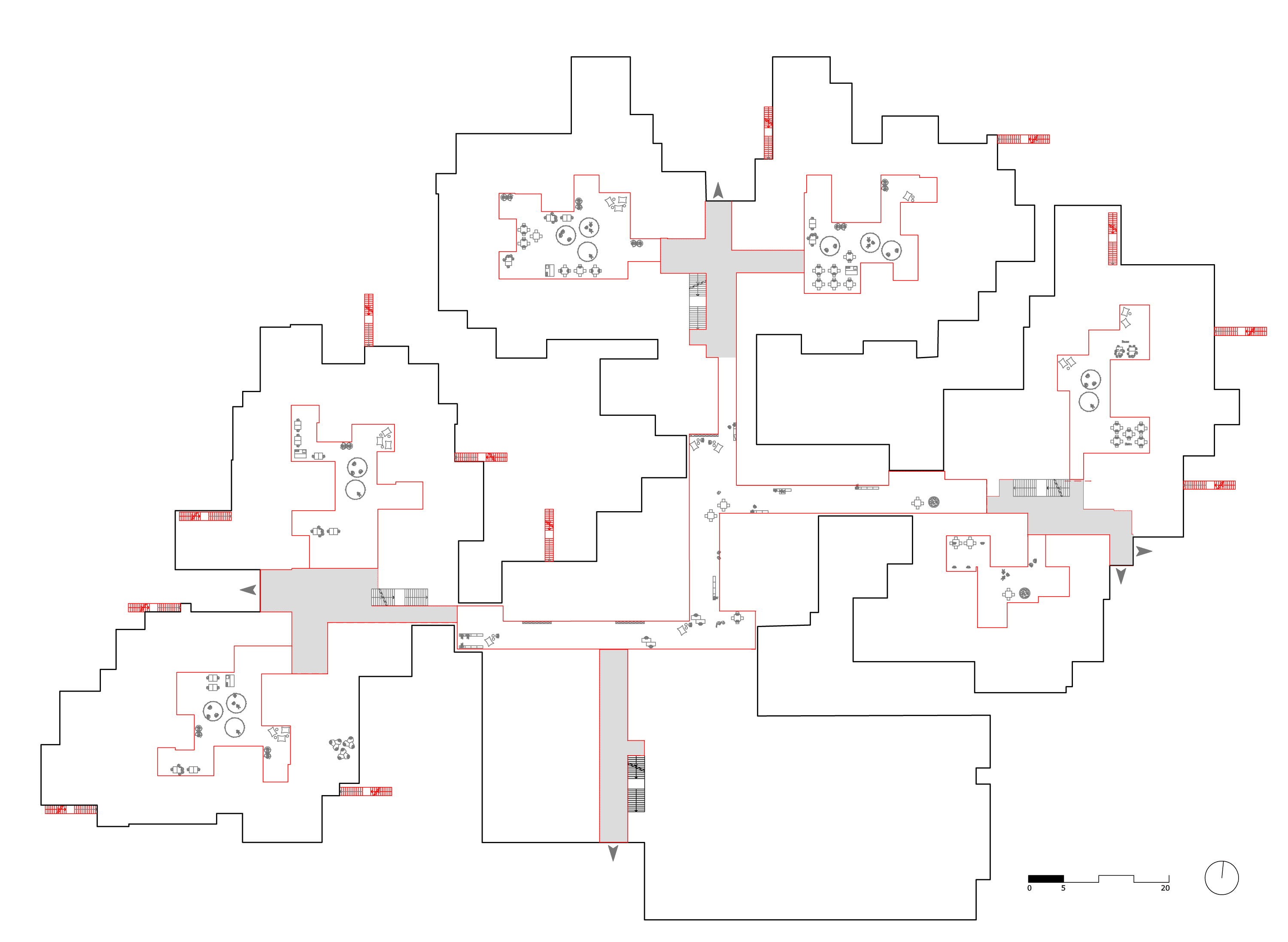
Fire protection concept
Due to good exit routes for all classes directly to the outside, the market place’s interior can be used to the full. Corridor spaces are reduced to a minimum.
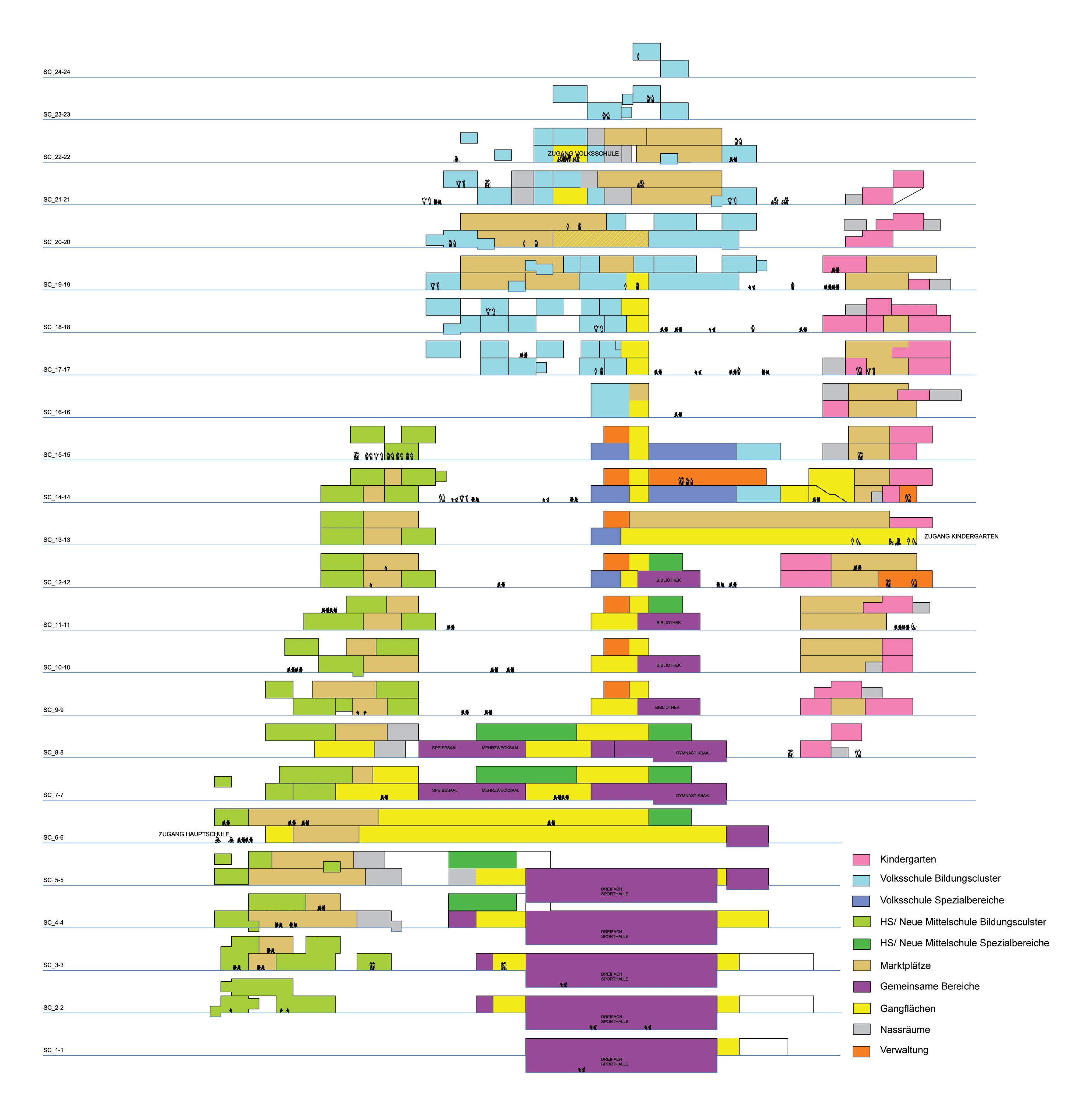
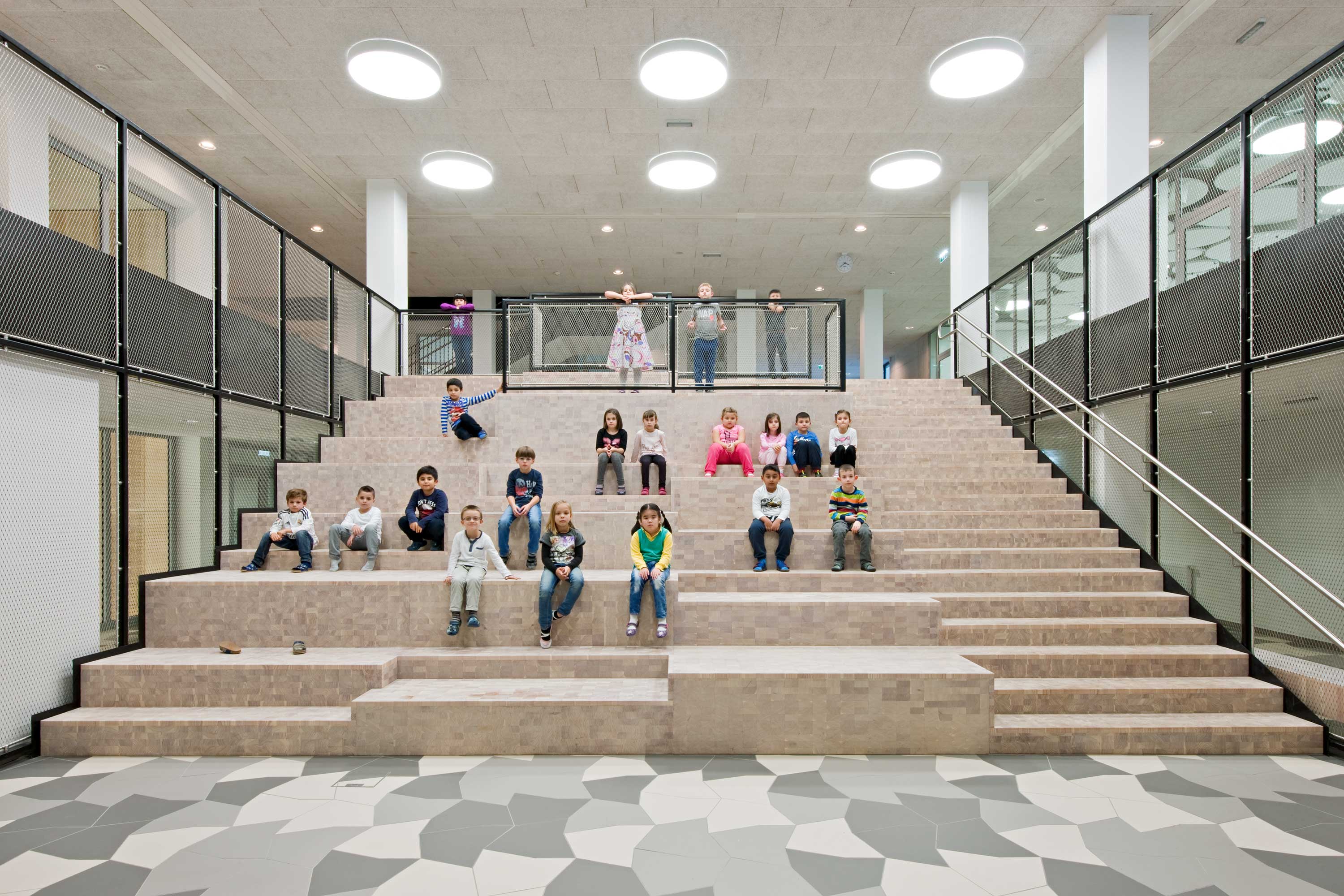
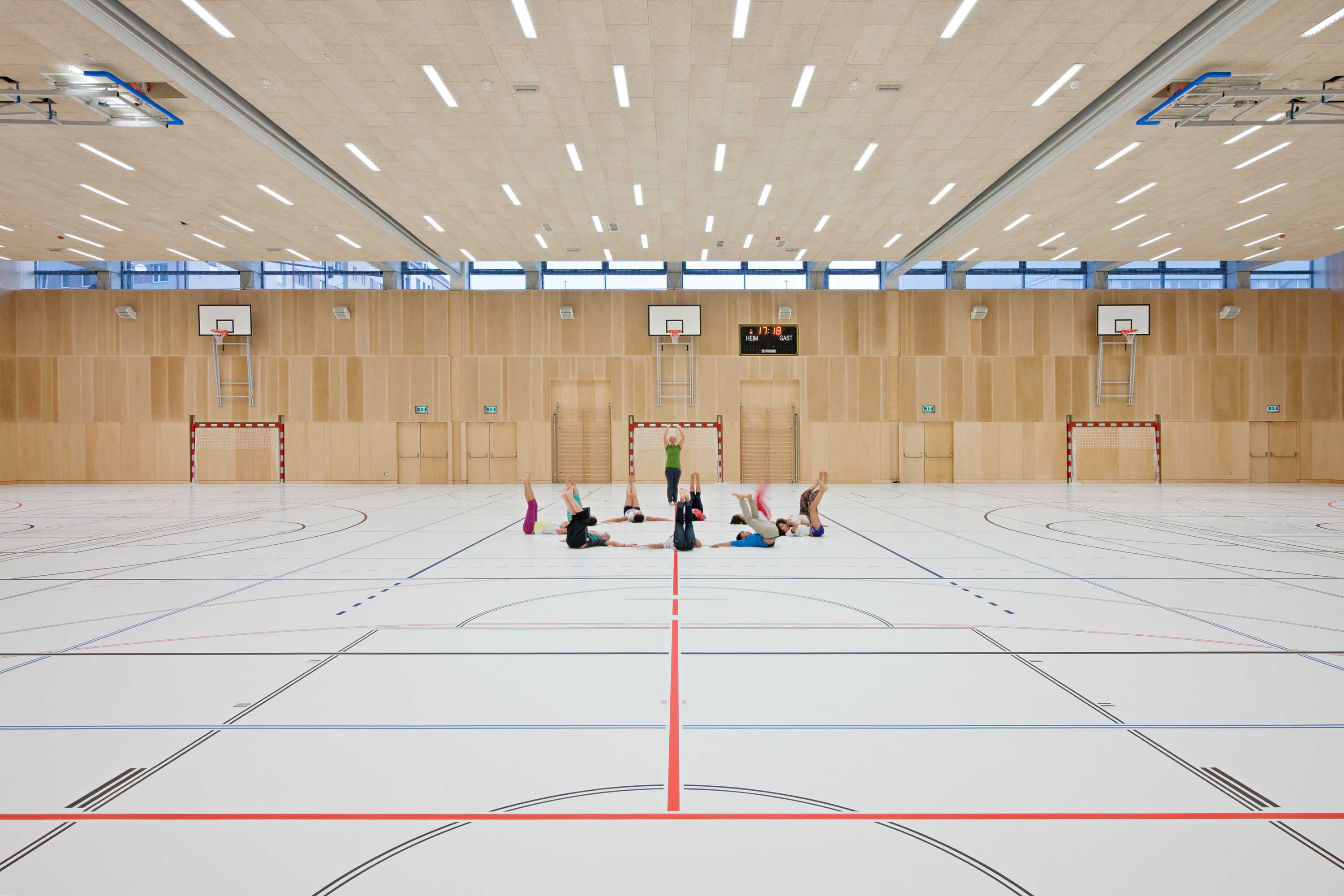
Photos: Hertha Hurnaus
